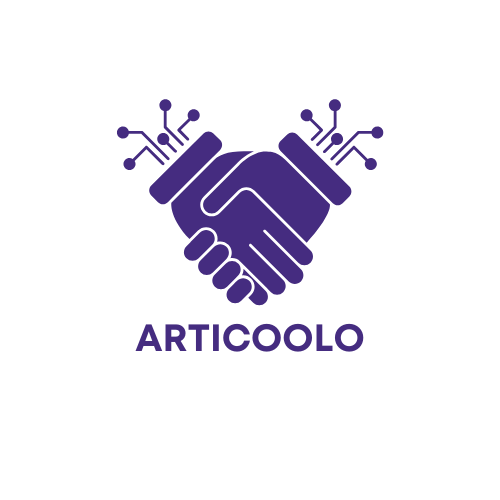In today’s fast-paced digital world, cranking out content feels like trying to keep up with a toddler on a sugar rush. Companies want to pump out articles, videos, and social media posts faster than ever, but the pressure can lead to a serious drop in quality. What if there was a way to scale content production without sacrificing the gold standard of quality?
Understanding Content Quality
Content quality is crucial during scaling efforts. It directly impacts audience engagement and brand perception.
Defining Content Quality
Content quality refers to the value and effectiveness of the material produced. It encompasses originality, relevance, and accuracy. Metrics like clarity and coherence also play essential roles in determining quality. Effective content addresses the needs of the target audience while maintaining a high standard of writing. Engaging visuals enhance written content, making it more appealing. Consistency in voice and style contributes to overall quality, ensuring a strong brand presence.
Importance of Maintaining Quality
Maintaining quality ensures audience trust and loyalty. Trust arises when content meets expectations, delivering value consistently. Poor-quality content can lead to disengagement, resulting in lost opportunities. In a competitive environment, high-quality content sets a brand apart from its competitors. Quality optimization leads to better search rankings, improving visibility and reach. Furthermore, investing in quality content saves time and resources, reducing costly revisions or reworks later. Prioritizing content quality cultivates a positive relationship with the audience, ultimately driving conversions and brand growth.
Strategies for Scaling Content Production
Scaling content production without sacrificing quality requires deliberate strategies. Prioritizing effective methods ensures sustained engagement and brand perception.
Leveraging Technology
Integrating tools can streamline content production processes. Content management systems help organize workflow efficiently. Automation software allows for scheduling and distributing posts automatically. Analytical tools offer insights that guide content strategy. Data-driven decisions enhance quality and relevance while saving time.
Utilizing Freelancers and Agencies
Hiring freelancers or agencies expands access to diverse expertise. Professionals can provide fresh perspectives and unique skills. Collaboration with external teams fosters flexibility in content creation. This approach also alleviates pressure on in-house teams. Outsourcing can enhance overall production capacity while maintaining high-quality standards.
Implementing Efficient Processes
Establishing clear workflows optimizes content production. A defined approval process reduces bottlenecks and speeds up deadlines. Regular training and workshops enhance team skills and knowledge. Setting explicit content guidelines ensures consistency and coherence across all outputs. Streamlining communication channels further increases efficiency and quality control.
Balancing Quantity and Quality
Balancing content quantity with quality requires strategic planning and diligence.
Setting Clear Goals
Establishing specific goals lays the foundation for successful content production. Define metrics such as target audience engagement or desired reach before scaling efforts. Aligning these goals with brand objectives helps maintain focus. Clear guidelines enable teams to produce relevant and valuable content consistently. Tracking progress allows for adjustments to optimize effectiveness. Regularly revisiting these goals ensures they remain relevant as market dynamics evolve. Setting benchmarks also assists in evaluating both quantity and quality effectively.
Regular Quality Checks
Quality checks should be an integral part of the content production process. Scheduling periodic reviews enables teams to maintain high standards throughout workflows. Creating a standard checklist can streamline this process, ensuring that all essential elements are examined. Engaging multiple team members in evaluations fosters diverse perspectives on content effectiveness. Utilizing analytics to assess audience responses can further guide improvements. These checks promote accountability and help identify areas for enhancement in both new and existing content. Emphasizing quality at every stage enhances the overall brand presence in the digital space.
Tools for Streamlining Content Production
Employing the right tools enhances efficiency and helps maintain quality in content production. Various options exist that can automate and simplify processes, ensuring a steady flow of high-quality content.
Content Management Systems
Content management systems (CMS) play a vital role in organizing and publishing content. Popular platforms like WordPress and HubSpot offer features that facilitate easy content creation, editing, and scheduling. These systems allow for multiple user access, enabling teams to collaborate effectively without delays. Customizable templates within these CMS platforms ensure consistency in branding, which supports a unified voice across different content types. Moreover, analytics tools integrated into CMS can measure performance metrics, identifying what resonates with the audience.
Collaboration Tools
Collaboration tools improve team communication and streamline project management in content production. Software such as Trello, Asana, and Slack enables teams to assign tasks, share feedback, and track progress in real-time. Instant messaging features foster quicker decision-making, reducing delays in content delivery. Document-sharing capabilities also allow for seamless revisions, ensuring that all team members are on the same page. Utilizing these tools promotes transparency and accountability, creating a cohesive work environment that prioritizes both quantity and quality in content creation.
Conclusion
Scaling content production while preserving quality is a challenging yet achievable goal. By prioritizing effective strategies and leveraging the right tools, brands can enhance their content output without compromising on the standards that matter most. Focusing on originality relevance and clarity ensures that the content resonates with audiences and strengthens brand loyalty.
Regular quality checks and clear workflows promote accountability and continuous improvement. As companies navigate the complexities of content creation in a competitive landscape they must remember that high-quality content not only drives engagement but also fosters trust and conversions. Embracing these principles will empower brands to thrive in the digital space while maintaining a strong connection with their audience.














Discussion about this post